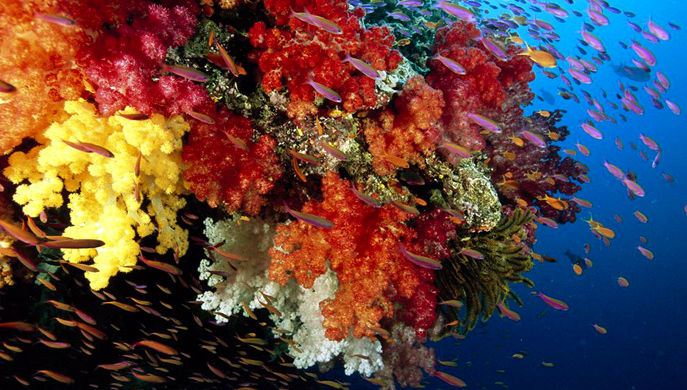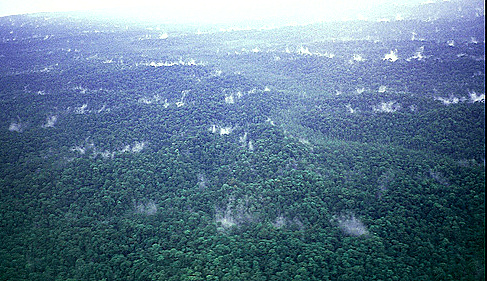Tipping Over
Tipping point (credit: Potsdam Climate Change Institute/Stefan Rahmstorf)
When does an ecological system reach the point where it tips from one state into another? These thresholds are critical to recognize considering the myriad of stresses now affecting natural systems everywhere. One program, Ocean Tipping Points, aims to embed the science of tipping points (ecosystem shifts) into coral reef and coastal zone management plans. A diversity of their projects has been announced in partnership with NOAA Fisheries, the National Center for Ecological Analysis & Synthesis (NCEAS), and the Moore Foundation, among others. According to the group:
"Understanding the environmental changes that lead to tipping points, how to mitigate them, and what people value from an ecosystem is key to maintaining or restoring them.

Coral Reefs represent Ecosystems on the Edge (credit: Ocean Tipping Points)
Other studies on 'tipping points' have also being published by the Transactions of the Royal Society in London. Some of their information offers promise of assisting natural resource managers to predict, avoid, and reverse tipping points that have led to degraded ocean habitats, economic losses, and social upheaval. One of their previous reports, Marine regime shifts around the globe, explores the science behind such shifts and how they can be mitigated.
Tipping points have not only been observed in marine environments but also widely in forests and polar regions. The Amazon rainforest has received for special attention considering its key role in the hydrologic cycle which extends far beyond the Amazon region itself. As the name implies, rainforests create their own rain by transporting water from the regions soil through their trunks, branches, and leaves into the canopy where transpiration and respiration moves the moisture daily into the air forming mists and clouds. Rainforests are often referred to as the lungs of the Earth due to this constant and sustainable process. An aerial view of lowland rainforests in Borneo shows it in action.

Tropical rainforest transpiration, Borneo (credit: SWP Media, Inc.)
Tipping points are now being detected in the tropical rainforests of the Amazon basin. Threats to these forests include: illicit mining operations; illegal timber harvests; poaching for the illicit wildlife trade; deliberately set fires; and wide scale deforestation for agriculture and ranching. Publishing in Nature Climate Change, investigators in Brazil see pronounced examples of degraded regions struggling to regrow their rainforest cover. These denuded landscapes could revert, ie 'tip over', into a savanna where once a thick and complex forest ecosystem existed. The researchers note that:
deforestation and climate change, increasingly dry-season length and drought frequency, may have already pushed the Amazon close to a critical threshold of rainforest dieback.
To explain such feedback loops, and what occurs when they get underway once a tipping point is crossed, a video uses examples from both the Amazon and Antarctica to show the outcomes.
Ecosystems can be restored from degraded states by applying tools of ecological restoration, physical manipulation, and finance. Understanding how they 'tipped over' to begin with is essential to realize success. There is no time to loose if the processes now in motion are to be halted and reversed. WHB